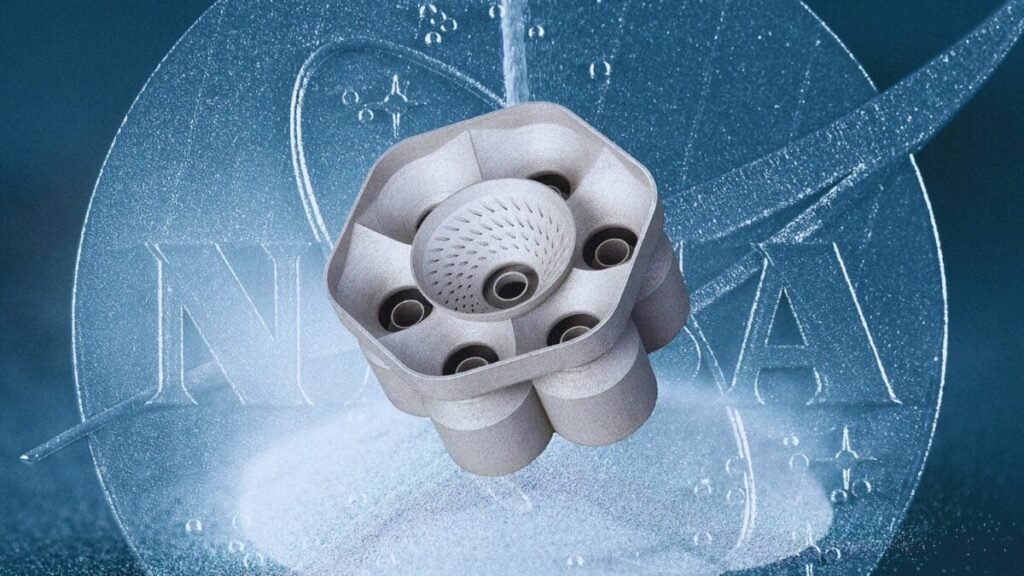Printable metal developed by NASA has potential to revolutionize space exploration

Space engines face a silent limit: traditional metals cannot withstand the extreme temperatures of the most demanding flights. Now, NASA has introduced a revolutionary material: a printable metal that can withstand heat like never before. Its name is GRX-810, and it could redefine the future of aerospace engineering.
A Metal Born to Resist the Impossible
The GRX-810 is mainly composed of nickel, cobalt, and chromium, but its secret lies in a ceramic oxide coating that protects the metal powder particles. This technique, known as Oxide Dispersion Strengthening (ODS), enhances thermal resistance and extends the life of components. Until now, producing this type of alloy was too expensive and complex. The Glenn team devised a system of resonant acoustic mixing: rapid vibrations that coat each metal particle with oxide, ensuring that even if the piece is recycled, its properties remain intact.
Advantages that Surpass the Heat Barrier
Tests have shown that the GRX-810 can withstand a full year at 1,027°C under conditions that would cause other alloys to collapse in a few hours. Moreover, being manufactured with 3D printing allows for the creation of parts with impossible geometries using traditional methods, a key advantage in engines where every millimeter counts. Jeremy Iten, technical director of Elementum 3D – a Colorado-based company that produces the alloy under license – stated that the results in large-scale production double the already extraordinary lifespan achieved in the initial experimental batches.
Applications that Go Beyond Space
Although designed for space exploration, the GRX-810 is already being tested in commercial aviation. For instance, the company Vectoflow is developing flow sensors with this alloy for turbines. These sensors, crucial for measuring gas velocity, often fail within minutes due to heat; with the GRX-810, they could improve fuel efficiency and reduce emissions. NASA maintains that this advancement is more than just a material: it is a tool that redefines the boundaries of engineering and could mark a turning point in the history of space and air travel.




